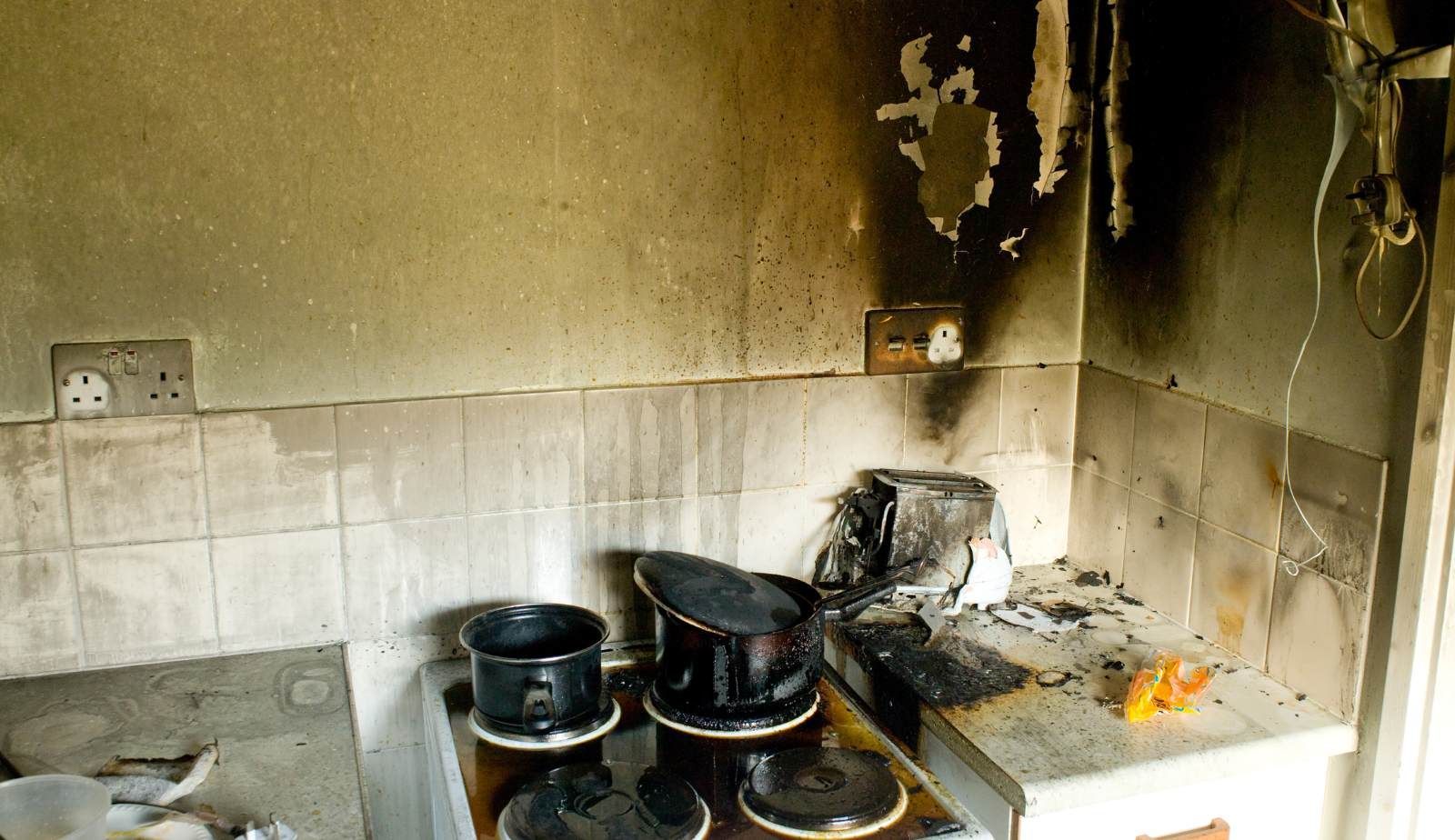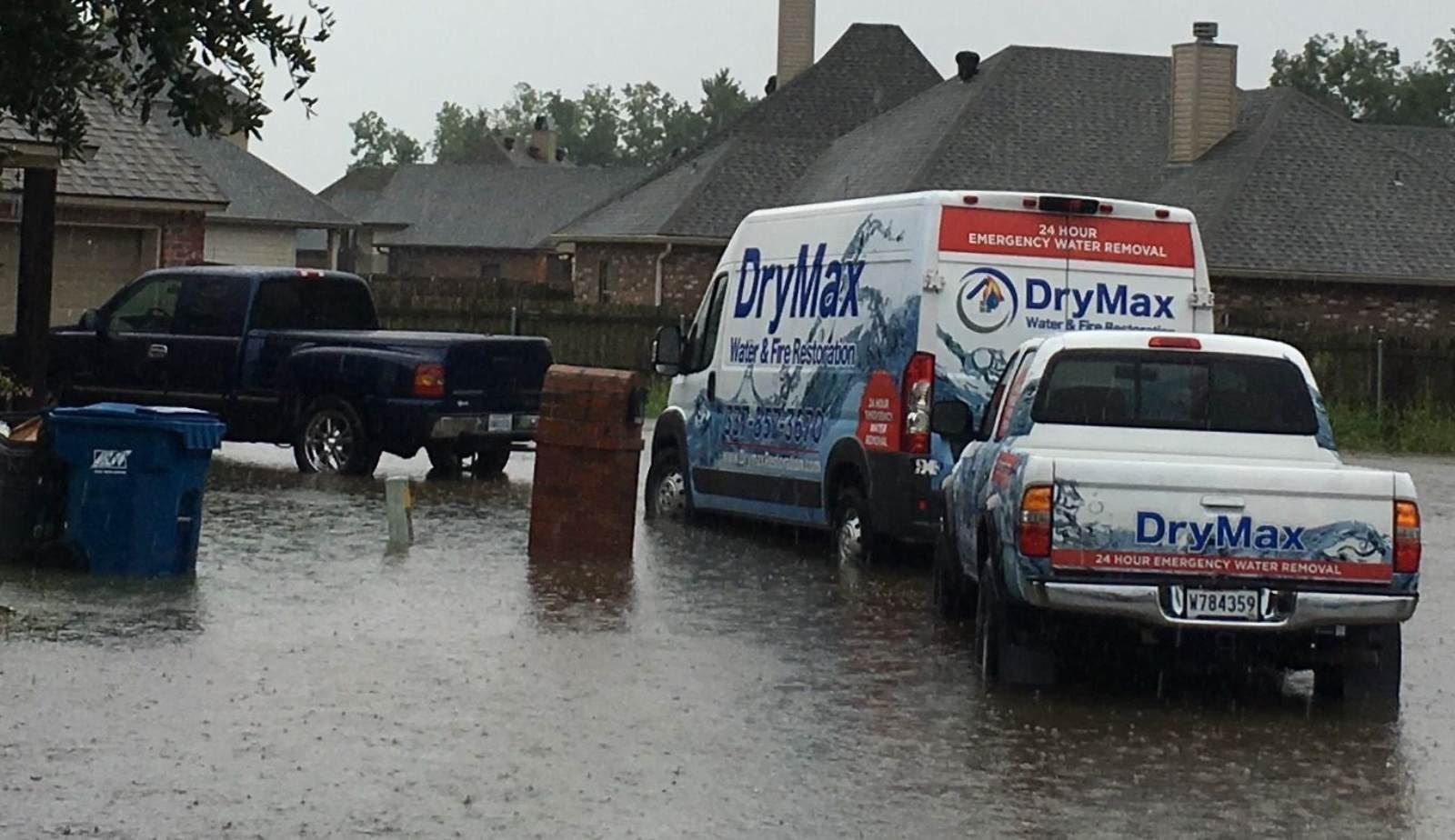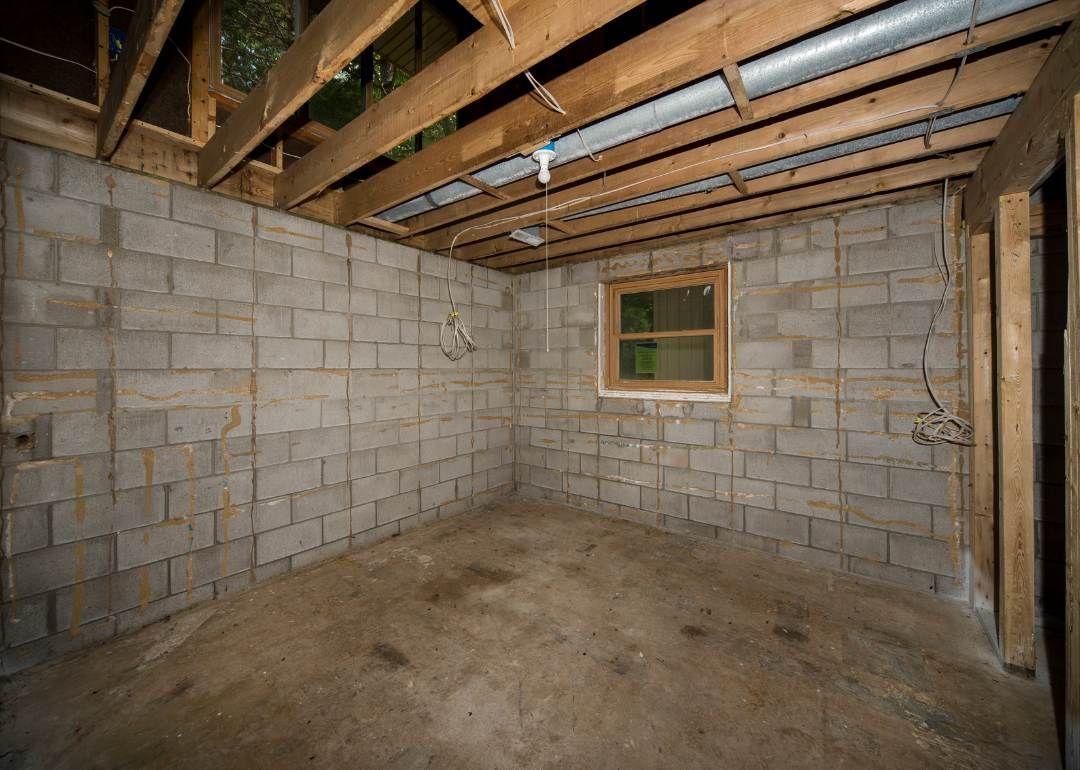Odor Removal After Fire or Flood: Why DIY Solutions Can Backfire with Tips from Drymax
Smoke and flood odors pose significant challenges for homeowners. Many may consider tackling odor removal themselves, believing that household products or DIY techniques will suffice. These approaches often fall short, as they may not effectively eliminate the deep-seated contaminants that lead to persistent smells and potential health risks.
Professional restoration services, like those offered by DryMax, specialize in comprehensive odor removal that addresses the root cause. Techniques such as using specialized cleaning agents and equipment can achieve results that DIY methods simply cannot. By bringing in experts, homeowners can ensure thorough cleaning and restoration, safeguarding their living environment.
Understanding the complexities of odor removal is essential. Navigating the aftermath of a fire or flood requires not just cleaning but also protecting health and safety. Proper ventilation, effective cleaning solutions, and professional intervention can make a significant difference in restoring a home to its former state.
Understanding Odors After Fire or Flood
Odors resulting from fire or flood damage can significantly impact living spaces. Recognizing how these smells develop, the issues caused by water damage, and the associated health risks is essential for effective remediation.
How Fire Smoke Smell Develops
Fire smoke smell originates from the combustion of various materials, producing complex compounds. Smoke particles become trapped in porous surfaces, such as walls, fabrics, and furniture. These particles contain toxic substances that persist even after visible damage has been addressed.
When smoke infiltrates a home, it creates an unpleasant odor that can last for weeks or longer. Effective removal requires specialized cleaning techniques, as standard cleaning supplies often fail to neutralize smoke particles. Ventilation can help dissipate the smell, but complete eradication usually necessitates professional intervention.
Odor Issues From Flood Damage
Flood damage introduces distinct odors, primarily due to excess moisture leading to mold and mildew growth. The musty smell is a direct result of waterlogged materials, such as wood and drywall, acting as breeding grounds for microbes.
As water damage lingers, odor becomes more pronounced. Stagnant water not only contributes to foul smells but also poses risks to structural integrity. Ignoring these odors can lead to further deterioration and health hazards, necessitating prompt attention and professional remediation services.
Health Risks Associated With Residual Odors
Residual odors from fire or flood damage aren't just unpleasant; they can pose health risks. Smoke particles released during and after a fire can affect respiratory health, especially for individuals with pre-existing conditions.
Similarly, odors from mold and mildew can trigger allergic reactions or respiratory issues, particularly in vulnerable populations such as children or the elderly. Prolonged exposure to these odors often leads to more serious complications. It is crucial to address and manage these odors swiftly to safeguard health and well-being.

Why DIY Odor Removal Is Risky
Attempting to remove odors after a fire or flood without professional help can lead to a range of issues. This approach often lacks the effectiveness necessary to eliminate persistent smells, while also posing safety risks. Below are key considerations regarding DIY methods for odor removal.
Limitations of Home Remedies
Home remedies are commonly used for odor removal but have significant limitations. Solutions like baking soda, vinegar, or air fresheners may mask odors temporarily but fail to address the source.
- Temporary Relief: While these methods might seem cost-effective initially, they only cover up underlying problems.
- Ineficient Against Stubborn Odors: Smoke odor removal is particularly challenging, as it seeps into fabrics, walls, and vents.
Because home remedies do not penetrate deeply or neutralize the underlying causes, they can lead to lingering smells that require more intensive remediation.
Safety Concerns With Chemical Exposure
Using commercial products for odor removal can introduce health risks. Many individuals lack the training to handle chemicals safely, which can lead to hazardous situations.
- Toxic Fumes: Some cleaning agents release fumes that may trigger respiratory issues or skin irritation.
- Improper Use: Inadequate application or mixing of products can result in dangerous chemical reactions.
These safety concerns highlight the need for trained professionals who understand the correct handling of chemicals and can ensure a safe environment during cleanup.
When DIY Approaches Make Odors Worse
In some instances, DIY methods can exacerbate existing odors. For example, using excessive amounts of water to clean surfaces after fire damage can lead to mold growth.
- Trapped Moisture: Inadequate drying can create an environment where odors thrive, especially if smoke particles remain embedded.
- Soot Residue: Without proper techniques, soot and ash can be spread around, making the situation worse.
Professional odor removal services are equipped to remove smoke particles effectively and ensure that residual smells do not persist, addressing both health and property concerns.
Common DIY Methods and Their Effectiveness
Many homeowners turn to DIY methods for odor removal after a fire or flood, thinking these approaches are effective and cost-efficient. While some techniques can provide temporary relief, others may fall short in addressing the root causes of persistent odors.
Use of Baking Soda, Vinegar, and Other Absorbers
Baking soda is a common household item known for its ability to absorb odors. Placing bowls of baking soda in affected areas can create a neutralizing effect. Vinegar, another popular absorber, can be used in a spray bottle to mist over surfaces. This method helps eliminate smoke and mildew odors due to its acetic acid content.
Activated carbon filters are even more effective at capturing odor molecules. They work by adsorbing smells from the air, making them a valuable tool in odor management. While these methods can diminish some odors, they may not penetrate deeply into materials like upholstery or drywall, where odors may persist.
Box Fans, Filtration, and Airflow
Box fans equipped with furnace filters offer a temporary solution to help reduce airborne particles. By rigging a filter to a fan, one can create an improvised air purification system. It helps in capturing dust and larger particles, improving air quality.
While this method can provide a temporary boost, its effectiveness diminishes over time. It does not specifically target smoke odors. For those persistent smells, relying solely on this method may not yield the desired results. Investing in proper air filtration systems designed for smoke removal can ultimately be more effective in the long run.
Problems With Air Fresheners
Air fresheners often mask odors rather than eliminate them. They can temporarily create a more pleasant environment, but they do not address the underlying sources of the smell. Many contain fragrances that simply cover up odors without neutralizing them.
Moreover, some air fresheners may introduce additional chemicals into the environment, potentially causing health issues. In cases of severe smoke or water damage, relying on air fresheners can lead to a false sense of security while the underlying problems remain unaddressed. More effective solutions, such as professional cleaning services and odor neutralization treatments, should be considered to ensure permanent odor removal.
Dangers Of Inadequate Smoke Odor Removal
Inadequate removal of fire smoke odors can lead to persistent and uncomfortable living conditions. The dangers are not only related to smell but also to potential health impacts from lingering particulates and harmful chemicals.
Persistent Fire Smoke Smell
A common consequence of inadequate smoke odor removal is the persistent fire smoke smell that can permeate walls, furniture, and fabrics. This odor often clings to surfaces, making it challenging to eliminate through regular cleaning methods.
Some key reasons for this issue include:
- Incomplete cleaning: DIY methods may fail to address odors trapped in hidden areas or HVAC systems.
- Material composition: Smoke smell originates from complex particles that bond with surfaces and can re-emerge over time.
Failing to professionally remove fire smoke smell can create an uncomfortable environment, leading to ongoing dissatisfaction in homes or workplaces.
Health Impacts From Lingering Particulates
The dangers of inadequate smoke odor removal extend to health impacts from lingering particulates. Smoke particles contain a mix of toxic chemicals and carcinogens that remain suspended in the air or settle on surfaces.
Exposure to these particles can result in:
- Respiratory problems: Individuals may experience coughs, asthma attacks, or chronic respiratory issues.
- Allergic reactions: Lingering allergens can trigger sensitivities and reactions in susceptible individuals.
Ignoring smoke damage can create long-term health risks. Professional intervention is critical to ensure thorough removal of harmful particles and to restore a safe living environment.
How Professionals Tackle Fire and Flood Odors
Professionals employ a range of advanced tools and methods to effectively tackle odors caused by fire and flood damage. Their expertise in restoration services ensures thorough removal of smoke and other persistent odors, safeguarding health and comfort.
Advanced Cleaning and Deodorization Tools
Restoration services utilize specialized cleaning and deodorization tools designed for severe odor removal. Ozone treatment is common, breaking down odor molecules through high-energy oxygen molecules.
Thermal fogging is another effective method. It disperses deodorizing agents in a fog, penetrating deeply into surfaces to eliminate lingering odors embedded in walls and furnishings.
Using ultrasonic cleaners, they address soot and contaminants on hard surfaces. Each method requires skilled professionals to handle equipment safely and effectively, ensuring complete odor removal.
Role of Activated Carbon and HEPA Filters
Activated carbon filters are crucial in the odor removal process. They adsorb smoke particles and chemical residues, neutralizing unpleasant smells effectively.
HEPA filters are also employed to purify the air during the restoration process. Capable of trapping 99.97% of particles, they filter out soot and other allergens released during fire or flood incidents.
The combination of these filters creates a cleaner environment, significantly improving indoor air quality as restoration progresses.
Specialized Techniques for Deep Odor Removal
Professionals implement various specialized techniques to conduct deep odor removal. They start with a comprehensive assessment, identifying the source of odors, which could include behind walls or beneath flooring.
Deodorization agents specifically formulated to target smoke odors are applied in various areas. Techniques may include saturation, where concentrated agents are injected into porous materials that trap odors.
Post-cleaning inspections are critical to ensure that all odors have been addressed effectively. This thorough approach minimizes the likelihood of odors returning, providing long-lasting results.
Why Choose Drymax for Professional Odor Removal
Selecting Drymax for odor removal ensures that property owners receive top-notch service rooted in expertise and comprehensive restoration. The following areas illustrate why engaging Drymax is a smart choice for effective odor management.
Expertise and Specialized Equipment
Drymax employs certified professionals with extensive training in restoration services. Their team understands the complexities of odor removal after incidents like fires or floods.
They utilize specialized equipment, such as ozone generators and thermal fogging machines, designed to penetrate porous surfaces and eliminate odors at the source.
With experience in various scenarios, including smoke and water damage, the team delivers effective solutions tailored to specific needs. The right knowledge and technology make a significant difference in achieving lasting results.
Comprehensive Restoration Services
Drymax offers a full suite of restoration services that extend beyond mere odor removal. After a fire or flood, the focus is on restoring a property to its original condition.
Services include damage assessment, debris removal, and effective moisture control. This holistic approach ensures that all aspects of restoration are addressed, preventing future issues and maintaining indoor air quality.
Incorporating advanced techniques, Drymax stands out in the industry by addressing the root causes of odors while simultaneously restoring the property. This comprehensive strategy provides peace of mind to property owners.
Customer Safety and Satisfaction
Customer safety is paramount at Drymax. The professionals follow industry standards and guidelines to ensure the well-being of clients during the restoration process.
In addition to safety protocols, Drymax prioritizes customer satisfaction by maintaining clear communication and transparency throughout the project.
They offer guarantees on their services, reflecting their commitment to quality. This focus on safety and satisfaction helps build trust and fosters long-term relationships with clients.
Prevention and Restoration Best Practices
Effective prevention and restoration practices significantly mitigate lingering odors and promote a healthier indoor environment after fire or flood damage. By focusing on HVAC maintenance, structural repairs, and long-term air quality solutions, property owners can ensure sustainable outcomes.
HVAC Maintenance and Filter Replacement
Regular HVAC maintenance is crucial for controlling odors from fire or flood damage. A well-functioning system helps circulate clean air throughout the space.
- Filter Replacement: Using high-efficiency activated carbon filters captures smoke particles and odors that standard filters might miss. Filters should be replaced every 1 to 3 months, especially following a disaster.
- Duct Cleaning: After a fire, soot can accumulate in the ductwork. Professional cleaning eliminates particles that contribute to persistent odors.
- System Inspection: Regular inspections by certified technicians ensure the HVAC system operates efficiently, minimizing any risks related to air quality.
By implementing these practices, homeowners can enhance air circulation and significantly reduce smoke odors.
Structural Repairs and Odor Sealing
Addressing structural damage must prioritize odor sealing. This prevents the infiltration of lingering smells from smoke or water.
- Assessing Damage: Inspect affected areas for moisture or structural integrity issues. Repairing or replacing damaged materials limits odor retention.
- Application of Sealants: Use specialized sealants designed to encapsulate odors in walls, ceilings, and floors. This creates a barrier against smoke particles.
- Thorough Cleaning: Deep-clean surfaces in affected rooms to remove soot accumulation before sealing. A detailed cleaning, combined with sealants, enhances the effectiveness of odor prevention.
Taking these steps can drastically reduce long-term odor issues in the home.
Long-Term Indoor Air Quality Solutions
Maintaining high indoor air quality is essential for a healthy living environment. Long-term strategies should focus on regular monitoring and use of advanced technologies.
- Dehumidifiers: These devices control moisture levels, preventing mold growth and dampness that contribute to unpleasant odors.
- Air Purifiers: Implementing air purifiers equipped with activated carbon filters can continuously remove fine smoke particles and improve air quality.
- Regular Air Quality Testing: Schedule routine assessments of indoor air quality to identify concerns early on. This helps ensure ongoing effectiveness of air quality solutions.
By prioritizing these strategies, property owners can maintain a clean and pleasant atmosphere long after remediation efforts are complete.

Frequently Asked Questions
Addressing odor removal after fire or flood damage involves understanding health risks, best practices, and cleanup methods. The following questions provide clarity on these important aspects.
What are the health risks associated with DIY odor removal after a fire?
DIY odor removal may leave behind lingering contaminants that pose health risks. Inhalation of smoke residues can trigger respiratory issues and other health complications. Professionals ensure proper removal of toxins, reducing the likelihood of long-term health effects.
What are the best professional practices for removing smoke odor from a house?
Professional practices include thorough cleaning, deodorization, and air purification. Technicians often utilize specialized equipment such as ozone generators and thermal foggers to eliminate odors. They assess the extent of damage and take comprehensive steps to restore the environment safely.
Which items should be discarded due to smoke damage after a fire?
Items that absorb smoke and soot may need to be discarded. This includes porous materials such as upholstered furniture, mattresses, and carpets. Non-porous items can be cleaned, but if they show severe damage or persistent odors, replacement may be necessary.
What are the steps to effectively clean smoke residue from walls and ceilings?
Cleaning smoke residue involves multiple steps. First, one should use a vacuum with a HEPA filter to remove loose particles. Then, apply a mixture of water and a suitable cleaning solution, scrubbing with a soft cloth or sponge to avoid damage.
How can you eliminate smoke odor from clothing following a fire?
To remove smoke odor from clothing, professionals recommend washing items with a mixture of detergent and an odor eliminator. For heavily soiled items, dry cleaning may be necessary. Ensuring proper ventilation during the process helps to remove residual odors.
What methods do experts use to address flood-caused odors in a home?
Experts address flood-related odors through water extraction, thorough cleaning, and dehumidification. They often employ antimicrobial treatments to prevent mold growth. Continuous air circulation and specialized drying equipment can significantly reduce lingering odors.
You might also like
DryMax Restoration Blogs





